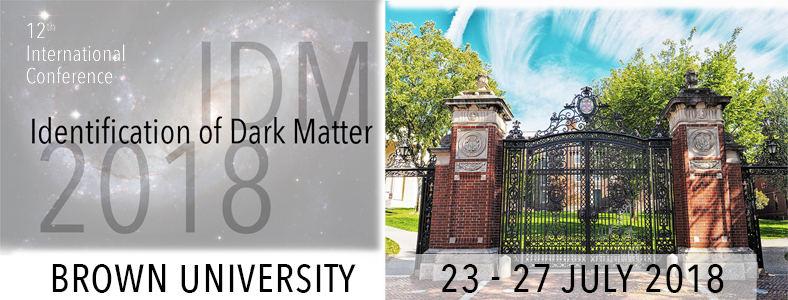Conveners
2.4 Theory
- Louis Strigari (Texas A&M)
In this talk, I would like to review how the CMB (in particular its temperature and polarization anisotropies) can be used to look for ultra light axion-like particles (ULAs).
Such ULAs are naturally numerous in the axiverse scenario and can play many role in cosmology, from Dark Matter to Dark Energy. Moreover, they have been invoked to solve several recent cosmological tensions. In...
Generalized dark matter (GDM) is a powerful framework capable of emulating the effects of a wide variety of dark matter and dark energy models. In this talk, I will discuss the GDM framework and show how it can reduce the moderate tension in the low CMB TT multipoles. The standard $\Lambda$CDM model predicts more power in the low TT multipoles than observed by Planck. This tension can be...
A stable sexaquark (S) composed of uuddss is a compelling Dark Matter candidate and would not have been discovered in accelerator experiments to date. I will briefly review its particle properties, why the S would have eluded searches for an H-dibaryon, and analyses of Upsilon decay and LHC data suitable to discovering it (as are now underway by BABAR, Belle, CMS and LHCb). The main focus...
Low-threshold detectors at sub-keV levels open windows to directly search for light dark matter (LDM) particles and constrain their possible interactions with electrons. As the energy and momentum scales of such scattering processes overlap with typical atomic scales, the many-body physics plays an important role in interpreting experimental data. In this talk, we present our approach and...
We explore the possibility that bound states involving dark matter particles could be detected by resonance searches at the LHC, and the generic implications of such scenarios for indirect and direct detection. We demonstrate that resonance searches are complementary to mono-jet searches and can probe dark matter masses above 1 TeV with current LHC data. We argue that this parameter regime,...
In this talk velocity dependent self-interacting dark matter models (vdSIDM) will be considered. A brief discussion on how dark matter self interactions might alleviate potential CDM problems at small scales will be presented. Following it will be shown that data already collected by the IceCube-DeepCore neutrino telescopes can probe most of the interesting vdSIDM parameter space. Finally that...
I will discuss a new mechanism for the primordial creation of dark matter, ‘co-decay’, where hidden sector particles comprising the dark matter have little or no interaction with the Standard Model. So how does one detect it? The hidden sector leads to a matter-dominated phase before Big Bang Nucleosynthesis, which results in enhanced growth of dark matter on small scales and the production of...
